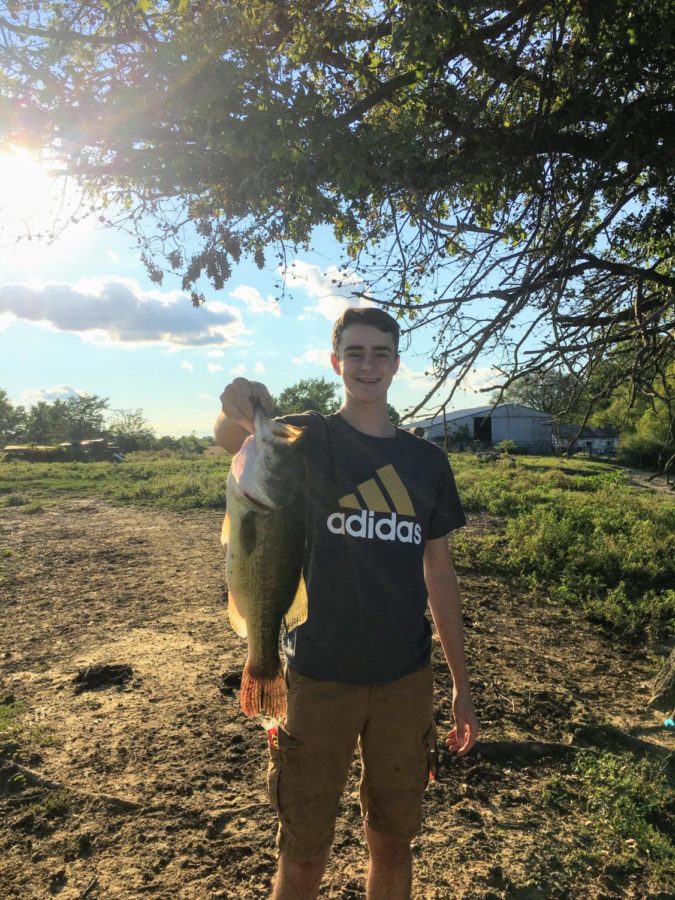How to Fish for Bass
January 11, 2019
Fishing can be a very fun hobby to do during the warm months, and even in winter if you’re up for it. One of the most popular kinds of fishing is bass fishing, there is even a bass fishing team at our own high school. There are many different techniques and lures to use to catch bass, and there are a lot of factors that determine the most effective way to catch them.
There’s a lot of luck when it comes to fishing, just like any other sport. Some days you might go without even getting a single bite, while on others you could get hit after every cast. Being lucky isn’t all there is to fishing though, because knowing exactly what to use and what to do can help you out a lot. One of the biggest factors with fishing is you’re location. For example, you probably won’t get much action throwing a topwater frog in the middle of a lake, because frogs tend to stay near the banks, where there is land and things like moss and lily pads.
After knowing in what spot you’re going to be fishing, you need to figure out what rod, reel, line, and what lure to use. What rod and reel you will use is mostly determined by your personal preference. A lot of reels come with their own rod that goes with it. The most common types of reels are baitcasters and spinning reels. For line, you can either use a braided line, or a clear line that is usually made of polymer or monofilament. Braid is usually stronger while clear line is smoother and easier to work with. After that, you want to find the best lure for the spot and condition you are fishing in. If you are fishing around brush or close to the bank, the best lures to use are top-water lures or lures with hidden hooks, so they don’t catch on brush as easily. If you are wanting to throw a frog, the best time to do that is at sunrise and sunset. The purpose of a lure is to imitate something that a bass would eat, and frogs are most active in the water at these times. If you are in deeper water, you can throw many lures, such as rubber lures. These include worms, craws, lizards, and other small animals and fish. Other lures, such as spinnerbaits or crankbaits are also made to run in deeper water. The color of the lure is important too. In darker or muddier water, it is best to use brighter colors, and in clear water it is best to use lighter colors. The brighter colors in dark water pop out when running through the water, and the lighter colors in clear water look more natural to the bass. Different lures are maneuvered differently through the water. Crankbaits and spinnerbaits are to be constantly reeled at a constant pace, while rubber lures are most often twitched and slowly reeled at the bottom of the water, and topwater baits are usually jerked to attract a lot of attention with movement and noise.
The best part of fishing is hooking the fish and fighting it all the way in. Once you feel a fish take your lure, you have to jerk the pole back hard and fast to set the hook in the bass’s mouth. After that, you have to keep constant tension in your line so the bass doesn’t knock the hook loose. It is best to let the bass fight for a short time so it wears itself out and you can reel it in easier. If the bass is too big for your line or wears it out, it might snap, which is just a part of fishing. If you do succeed at getting the bass all the way in, you get to reach in the bass’s mouth and take the hook out without trying to injure it. Then you can take out your phone and show all your buddies, kiss the bass, then either keep it or throw it back in the water. Hopefully your luck doesn’t run out after one catch and you keep bringing in big ones!



